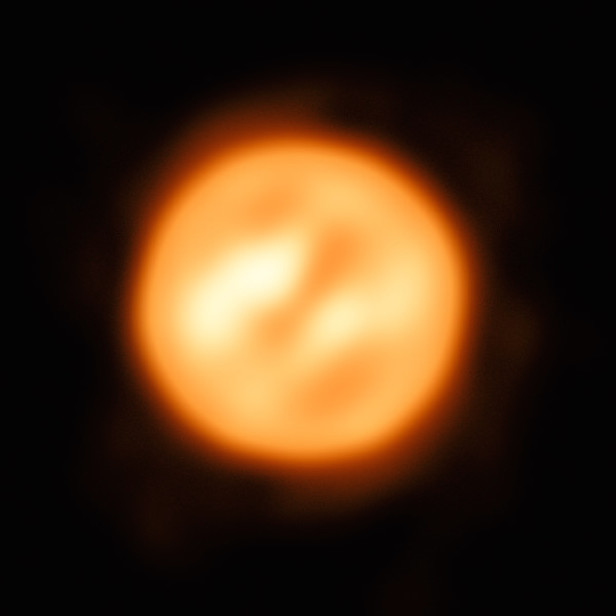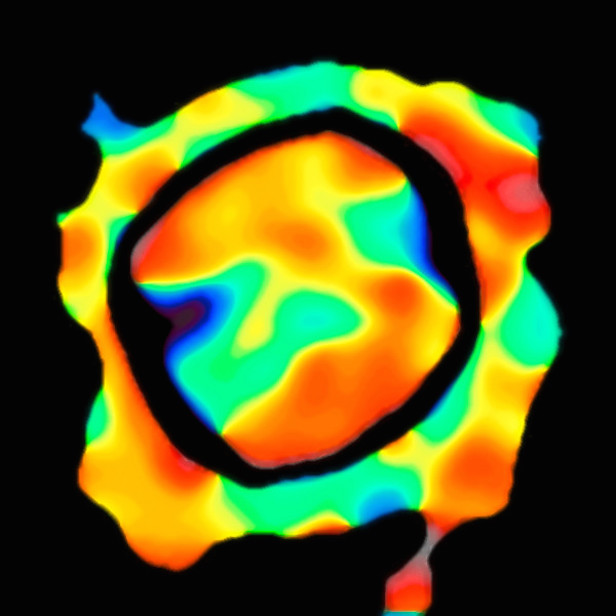Astronomers get best image yet of red supergiant’s surface and atmosphere
Captured by the Very Large Telescope, astronomers have unveiled new information about Antares in the constellation of Scorpius

Antares is a relatively close star, as it is only 550 light years from us. Image credit: ESO/K. Ohnaka
Astronomers have created the first detailed image that shows the true nature of the surface of Antares, producing the first-ever map of the red supergiant’s atmosphere. The gaseous envelope of Antares, which would extend further than the Asteroid Belt if it were placed in our Solar System, has shown to experience unexpected turbulence.
Antares is the brightest star in the constellation of Scorpius (The Scorpion), and when it is viewed with the unaided eye, reveals a distinctive red tint. The star is categorised as a ‘red supergiant’, because of its relatively huge size and cooler temperature compared to the Sun. When our nearest star eventually runs out of hydrogen in about five billion years, it will become a red supergiant as well, puffing of its layers to form a planetary nebula.
The team of astronomers used the European Southern Observatory’s (ESO) Very Large Telescope Interometer (VLTI) at the Paranal Observatory, Chile. They utilised the three Auxiliary Telescopes, as well as an instrument called the ‘Astronomical Multi-Beam Combiner’ (AMBER). Not only were they able to use the instruments to resolve fine details of the surface, but they also captured separate images of the surface over a small range of infrared wavelengths. This data allowed the astronomers to deduce the difference in speeds of the atmospheric gas in a variety of positions. It also helped to determine the average speed throughout the star.

The motion of material in Antares’ surface paints an unusual picture. The red represents movement away from us, and blue represents movement towards us. Image credit: ESO/K. Ohnaka
“How stars like Antares lose mass so quickly in the final phase of their evolution has been a problem for over half a century,” says Keiichi Ohnaka, of Universidad Católica del Norte in Chie. “The VLTI is the only facility that can directly measure the gas motions in the extended atmosphere of Antares — a crucial step towards clarifying this problem. The next challenge is to identify what’s driving the turbulent motions.”
The analysis found turbulent, low-density gas much further from the star than predicted. This came as quite a surprise, hence why Ohnaka and his team concluded that this movement couldn’t have been the result of convection. Convection in this case is the large-scale movement of matter, which transfers energy from the core of a star to the surface. There must be a currently unknown process that explains this peculiar movement, particularly in the large atmospheres of red supergiants.
“In the future, this observing technique can be applied to different types of stars to study their surfaces and atmospheres in unprecedented detail. This has been limited to just the Sun up to now,” says Ohnaka. “Our work brings stellar astrophysics to a new dimension and opens an entirely new window to observe stars.”
Keep up to date with the latest space news in All About Space – available every month for just £4.99. Alternatively you can subscribe here for a fraction of the price!




